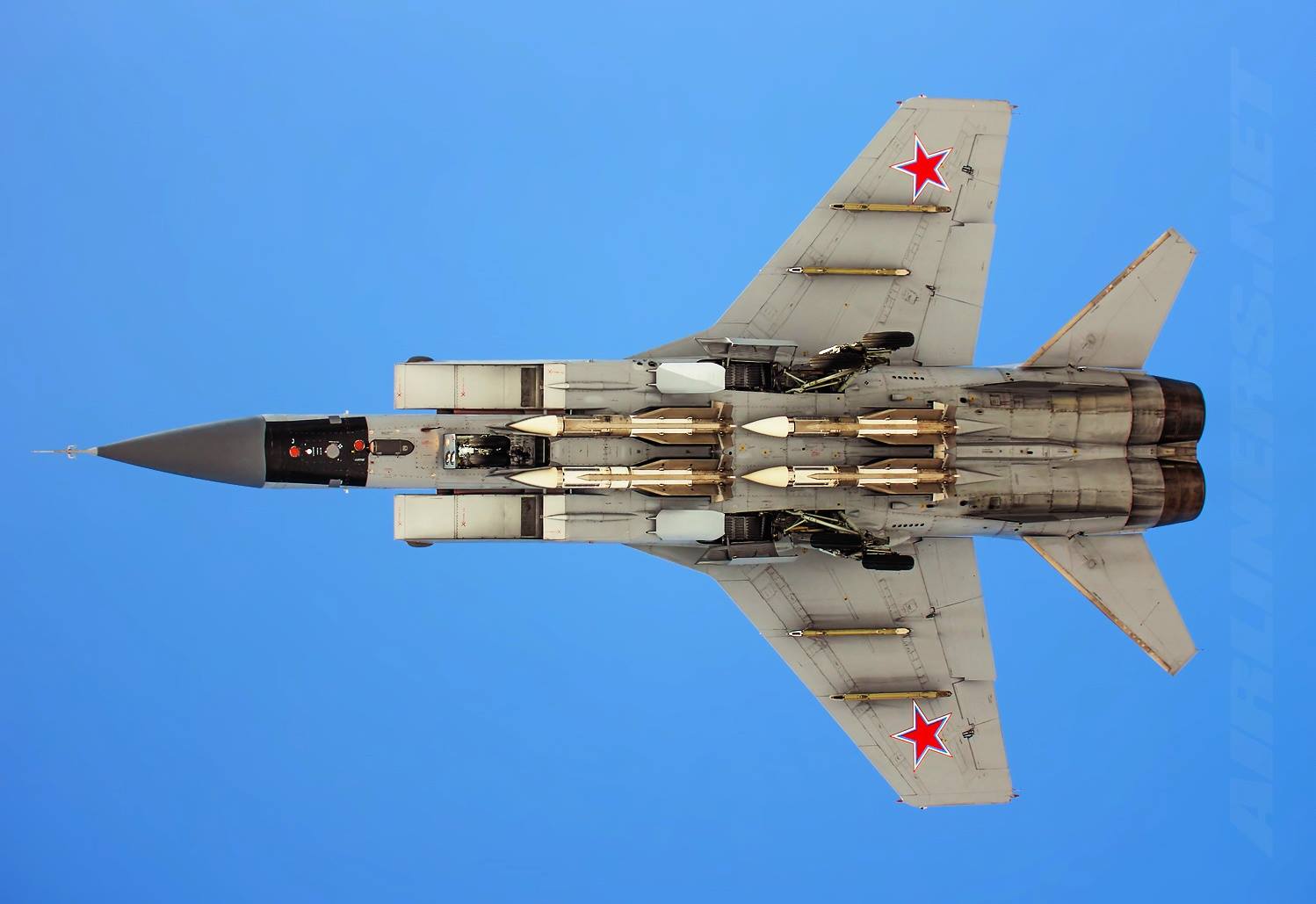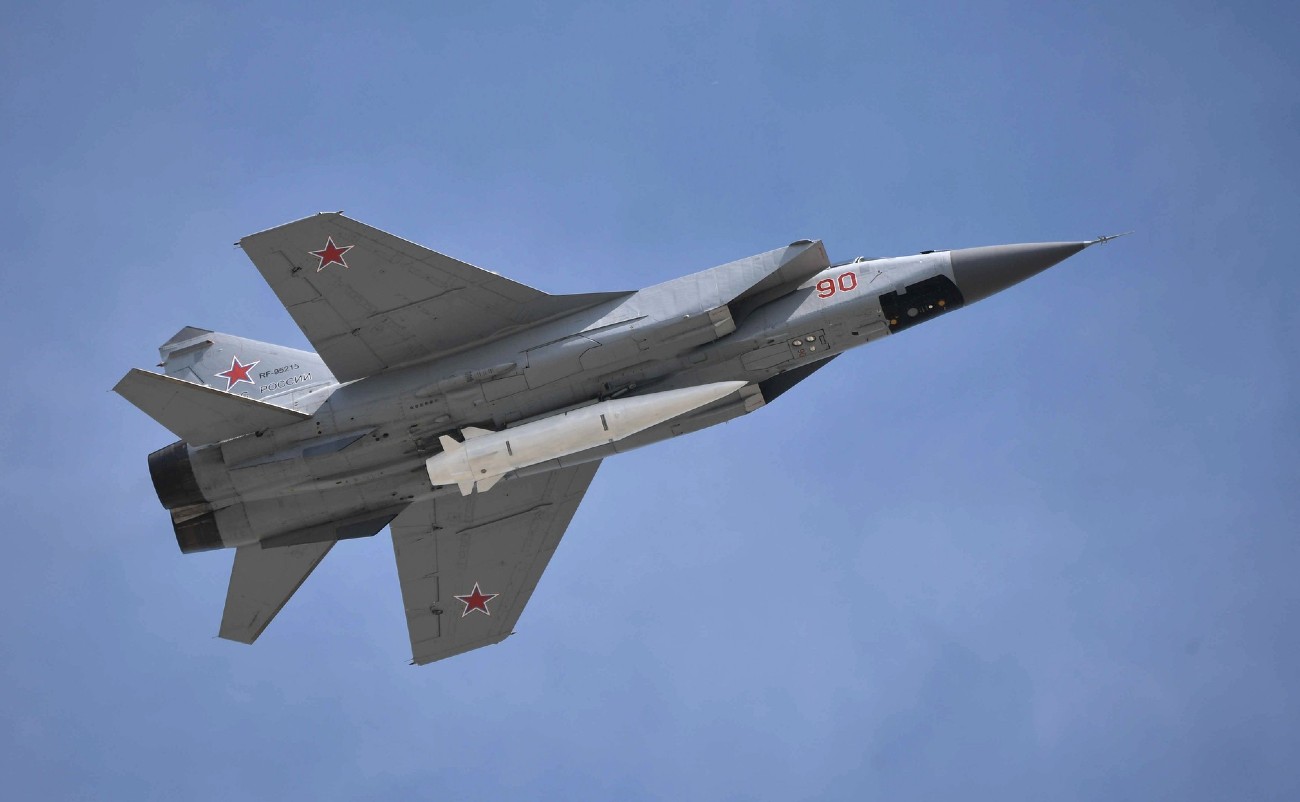The MiG-31 fighter-interceptor, an aircraft that has demonstrated its superiority by outperforming all other fighters deployed in the ongoing Russia-Ukraine conflict, has eliminated “enemy aircraft” that violated the air boundary of the Russian Federation during military drills.
The MiG-31 is widely regarded as one of the most powerful aircraft owing to its impressive capabilities and cutting-edge technology.
Its outstanding performance in the ongoing conflict between Russia and Ukraine has established its superiority over all other fighters deployed in the war, earning it a reputation as a highly effective weapon system.
Furthermore, the aircraft can detect and track enemy aircraft at long distances and launch powerful missiles with great accuracy.
According to a statement by the Russian defense ministry, in challenging weather conditions, the crew of the Pacific Fleet’s (TPF) MiG-31 aircraft, during a surprise inspection, simulated the destruction of an “enemy aircraft” that trespassed the air border of the Russian Federation.

The ministry stated that the crew of the MiG-31 fighter was tasked to intercept the intruding aircraft. The pilots effectively searched and identified the aircraft, tracked it, and then launched a simulated missile.
The ministry added that the target was destroyed as planned under objective control. Additionally, the fighters performed their training tasks in challenging weather conditions.
The crew of a similar aircraft also played the role of the intruder. As per the exercise plan, they were assigned to enter the fleet’s zone of operation covertly.
Russian President, Vladimir Putin, had ordered a surprise inspection of the Pacific Fleet, which began on April 14 and involved fully mobilizing all forces. The assessment also included long-range aviation, Eastern Military District aviation, support units, and their personnel.
Putin’s spokesperson, Dmitry Peskov, said that when the president talked about the need for the Russian fleet to be completely combat-ready, he had the possibility of regional wars in mind.
The Kremlin representative stated that Russia is facing a lot of turbulence on several fronts, which could lead to conflicts and regional disputes. Peskov elaborated that this situation is risky and could cause problematic scenarios.
What Makes MiG-31 A Powerful Fighter?
Even though the Russian Air Force is superior in strength and numbers to the Ukrainian Air Force, Ukraine has effectively implemented an air denial strategy by deploying air defense systems and anti-aircraft weapons.
This strategy has effectively prevented Russian fighters from gaining control of the airspace. Ukraine successfully shot down several Russian fighter jets in the early stages of the conflict.
Despite the lack of air superiority, the MiG-31 Foxhound, a powerful twin-seater, supersonic, interceptor fighter aircraft, has been a formidable opponent for the Ukrainian Air Force.
Equipped with a range of long-range missiles, the MiG-31 has delivered devastating strikes on Ukrainian positions.
According to a report from the Royal United Services Institute (RUSI), the MiG-31 interceptor aircraft has reportedly shot down numerous Ukrainian warplanes with its powerful Vympel R-37M air-to-air missiles while conducting high-altitude patrols.

The RUSI report further mentioned that the Ukrainian aircraft and missiles lack the speed, range, and altitude characteristics necessary to engage MiG-31 interceptors effectively.
In an article, military experts Justin Bronk, Nick Reynolds, and Jack Watling noted that the Russian Air Force’s defensive patrols have been highly effective against Ukrainian attack aircraft and fighters.
The article highlights the challenges Ukrainian fighter pilots face due to the MiG-31BM and R-37M long-range air-to-air missiles, which have proven particularly difficult to counter.
There are currently three regiments of MiG-31BM fighter jets in the Russian Air Force, totaling about 90 aircraft, and all of them are in service.
Forbes previously reported that at least one of these regiments had been deployed to the Crimean air base of Belbek to undertake defense patrols and interceptions of Ukrainian aircraft.
During the initial stages of its invasion of Ukraine, Russia also employed a MiG-31 variant outfitted with hypersonic Kh-47 Kinzhal (also known as ‘Dagger’) missiles to strike targets.
The MiG-31BM was initially planned to carry the Kinzhal hypersonic missile, but later the MiG-31K was chosen as the platform for this missile.
- Contact the author at ashishmichel(at)gmail.com
- Follow EurAsian Times on Google News




